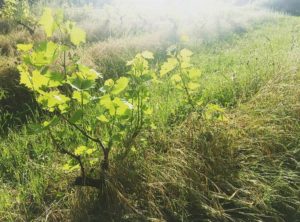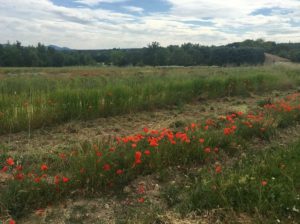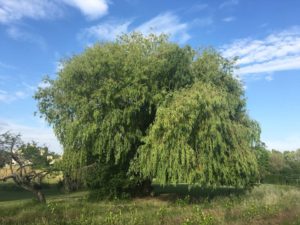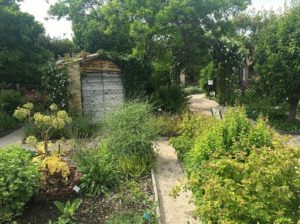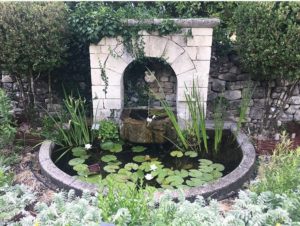Salagon, Musée et Jardins- Mane, Alpes de Haute-Provence


Salagon is a unique site located in Mane, near Forcalquier, in the middle of Haute-Provence and the Luberon. Made up of a priory which is a listed historical monument and 6 ha of gardens, Salagon is steeped in history, culture and know-how. The museum is managed by the Conseil départemental des Alpes de Haute-Provence.
Salagon is an ethnological Museum which introduces the general public to the links that Man has woven locally with his environment. Its collection includes objects which tell the story of rural life in Haute-Provence. Salagon is listed as an Ethnopôle (ethnocluster) for the quality of its scientific research on the “know-how of nature”.
The 1700 species of plants grown in the five themed gardens of Salagon illustrate the relationships between society in Haute-Provence and its plant environment. Listed a Remarkable Garden, Salagon is an open-air manual which is an aesthetic creation, a teaching tool and a place of conservation for plants and know-how.
The popular and village plants garden
This small garden brings together the basic plants used by society in Haute-Provence, the flora of towns and villages, domestic gardens, roadsides, cultivated fields and fallow pasture. These are the plants people see on the journeys they make day to day: between the stable and the pasture, and between the house and the school or wood.
This is where people gathered first-aid remedies and also field salad leaves and other wild vegetables. This is where children built new playthings each day. This is where older people passed on their knowledge, by both showing and telling.
The medieval garden
This garden is inspired by illuminated manuscripts, treatises on agriculture and medieval pharmacopoeia. It tells the story of plants in Western Europe before the discovery of the New World.
It is laid out in three major zones: the kitchen garden (plants grown for food), medicinal squares, the floral garden and the secret garden near the fountain.
A range of cereals (rye and wheat, spelt and millets) are used to make bread, groats and porridge. Pulses are rich in protein and are an important source of nutrition.
In the medicinal squares, five beds relate to the five medieval pathology and pharmacopoeia groups from the old classifications.
After the rose pergola, flowers used to decorate the altar are grouped together in the flower garden, together with plants used in weaving and dyeing. The other side of the fountain, in the secret garden, are the highly poisonous plants, from the days when medicine and magic were inextricably linked.
The modern garden is a journey through modern flora. It helps visitors understand the origins and history of vegetables, fruit and flowers, during the period when society moved slowly from a hunter-gatherer system to agriculture. It explains the role of plants in the progress made by societies, around the basic pairings of cereals and civilisations.
Each species in the garden links a continent and civilisations to the plants that helped it grow and develop:
Europe and the Mediterranean basin (wheat, vines, olive trees, etc.)
Sub-Saharan Africa (sorghum and millets, papyrus, etc.)
Asia (rice, citrus fruits, spices, etc.)
The Americas (maize, cucurbita, beans, etc.)
The fragrance garden
This is the latest of Salagon’s gardens. The five sensory trails designed to awaken your sense of smell function all year round. To help you get the most out of the experience, pictograms are used to indicate which part of the plant produces the fragrance – leaf, flower, root, wood, sap, fruit or resin.
In the fragrance garden you can learn how to recognise odours and describe them in words, how a perfume is composed (with the three registers: top, heart and base notes) and explore the botany of scent with a wide range of aromatic plants. Meet some odours, both good and bad, from day-to-day life, with plants that smell of garlic sausage, fish, popcorn, sweets, bins, tyres and bleach.
The grapevine: planted for teaching purposes, this grapevine presents about 50 grapes varieties relating to ancient or modern practices about vine in Provence.
Permanent exhibitions: Salagon, the whole story,,,
Tells you the story of the 2000 years of the priory of Salagon.
Temporary exhibitions: Terre du milieu, terre ouverte ( The middle-land, an open-land), 1st March- 8th October
Haute-Provence has been since the Middle Ages a passage between Italy and France. Even though the region was once emptied of its population, it now attracts new waves of inhabitants in a quest for a different life style.
Terrestre ( Terrestrial- landscapes): art works by Piotr Klemensiewicz, 14th April- 17th September
Le prieuré 04300 Mane
Phone : +33 (0)4 92 75 70 50
February/March/April 10am-6pm
May>September 10am-7pm
October/15 December 10am-6pm
